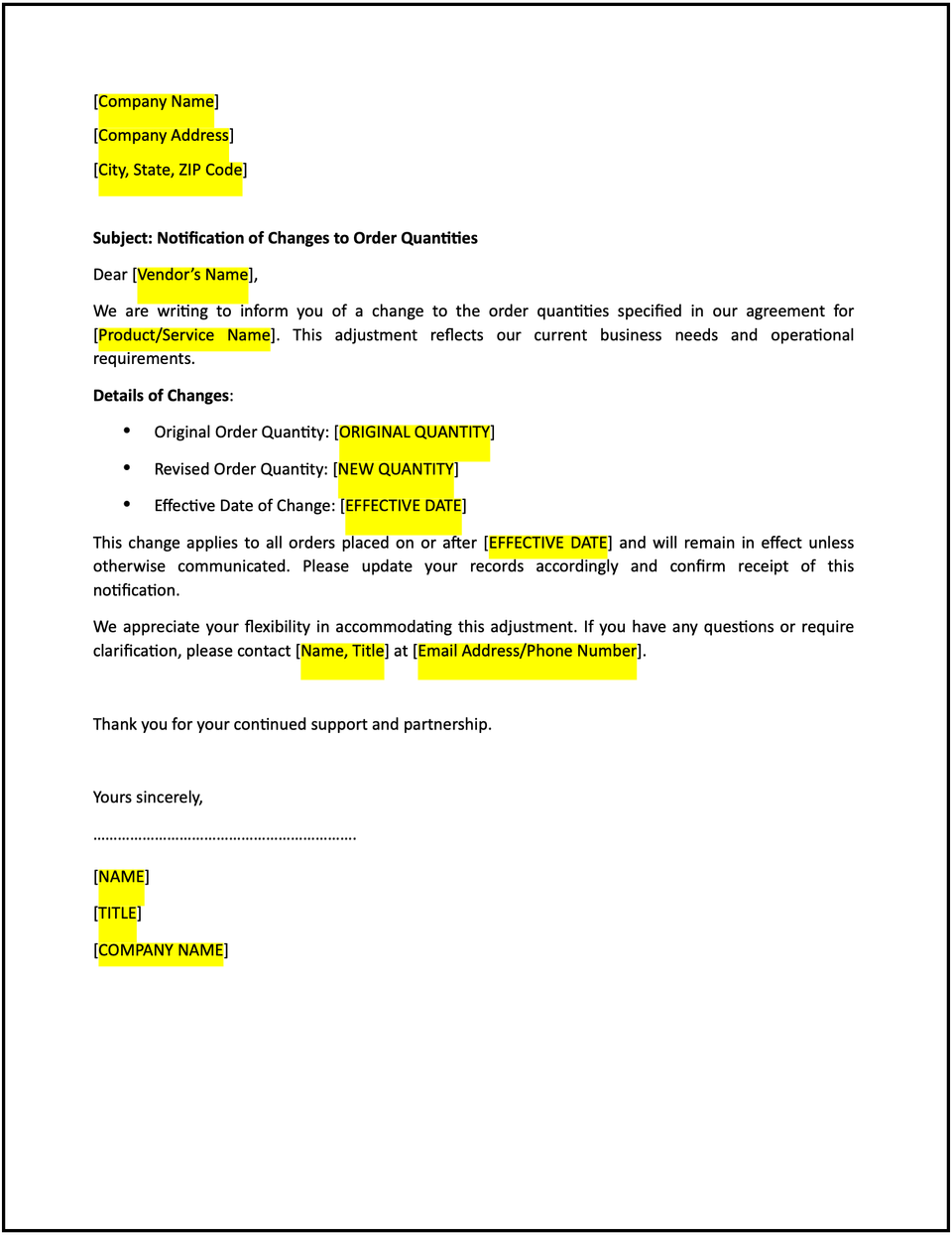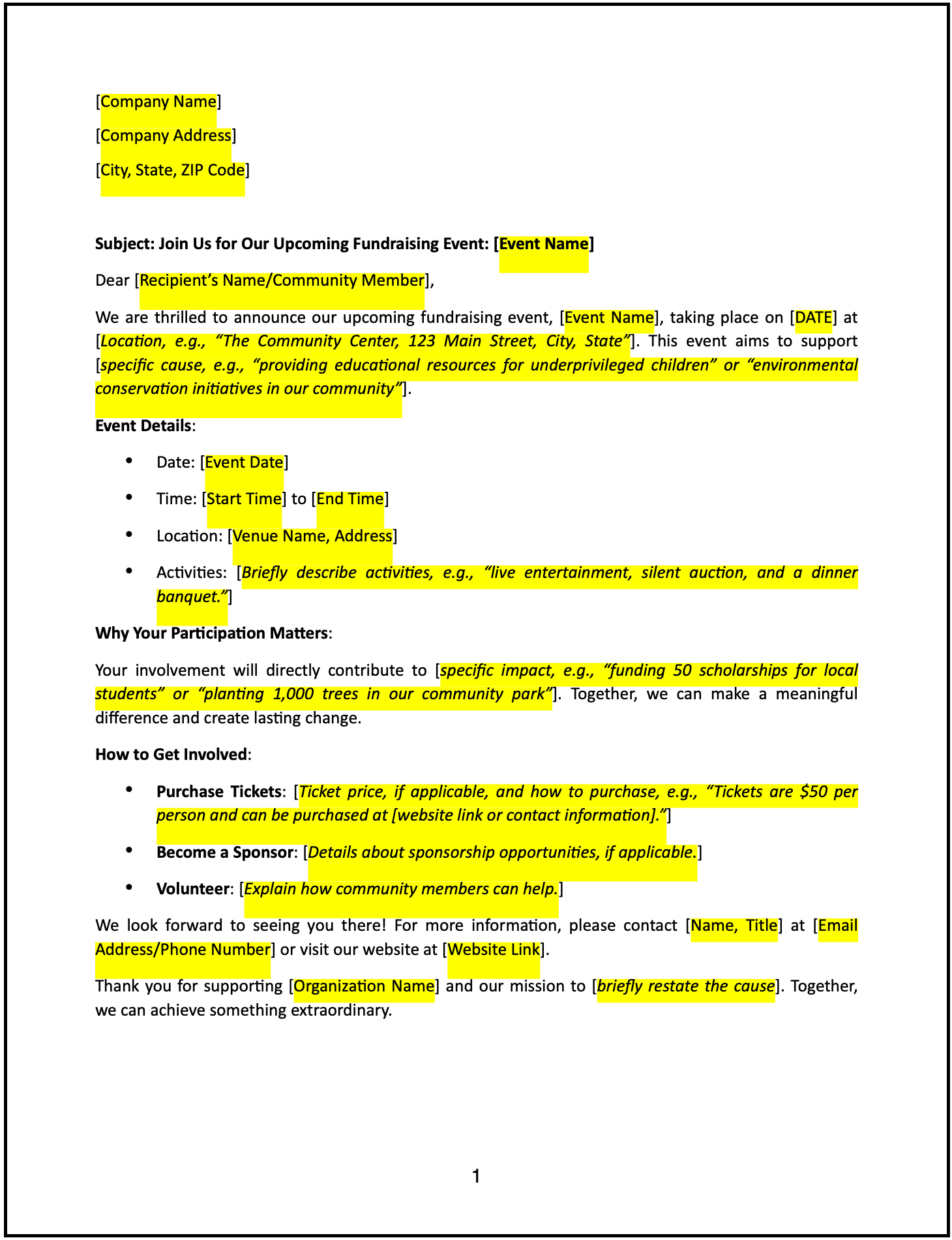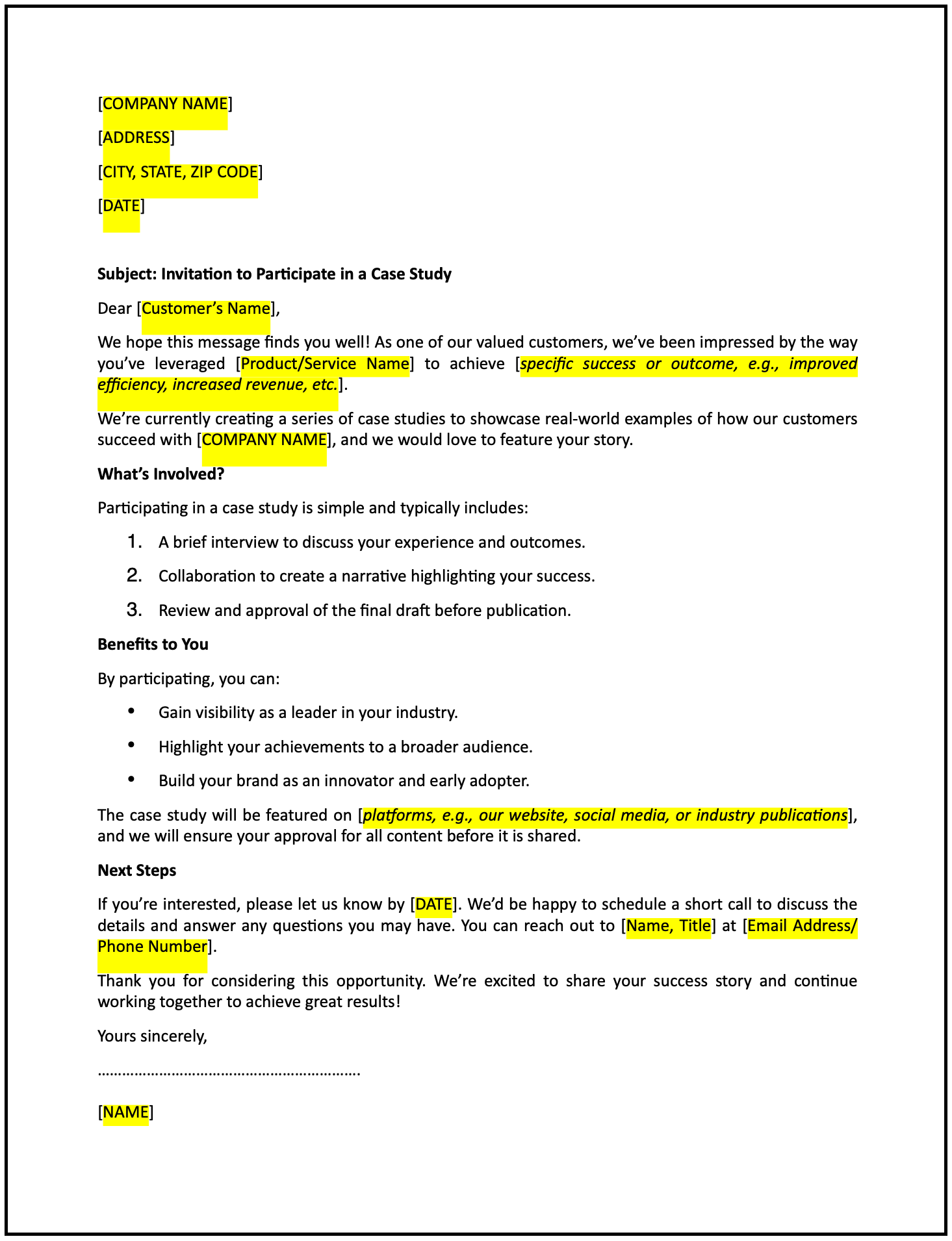Notification letter of changes to order quantities: Free template

Notification letter of changes to order quantities
A notification letter of changes to order quantities is a formal communication used to inform customers, suppliers, or stakeholders about modifications to the previously agreed-upon order volumes. This letter outlines the reasons for the change, its impact, and any steps needed to address the adjustments.
How to use this notification letter of changes to order quantities
- Open with an introduction: Address the recipient respectfully and reference the order by its number, date, or agreement details.
- State the purpose: Clearly communicate that there has been a change in the order quantities and specify the type of adjustment (increase or decrease).
- Provide reasons: Briefly explain the rationale behind the change, such as demand fluctuations, supply chain issues, or operational adjustments.
- Highlight the impact: Outline how the change affects the recipient, such as updated timelines, costs, or delivery schedules.
- Offer solutions: If applicable, propose adjustments to accommodate the change, such as revised delivery terms or alternative arrangements.
- Express commitment: Reassure the recipient of your dedication to minimizing disruptions and maintaining the relationship.
- Maintain a professional tone: Ensure the letter is clear, respectful, and focused on collaboration.
- Provide contact information: Include details for the recipient to reach out with questions or discuss the changes further.
Benefits of using a notification letter of changes to order quantities
This letter ensures a structured and professional way to communicate changes while maintaining trust and collaboration. Here’s how it helps:
- Promotes transparency: Clearly explaining the change prevents misunderstandings and builds trust.
- Reflects professionalism: A well-crafted letter demonstrates respect and attention to detail.
- Encourages alignment: Providing clear information fosters understanding and collaboration with stakeholders.
- Supports operational efficiency: Timely communication ensures all parties can adjust plans accordingly.
- Builds trust: Openly addressing changes reinforces a positive working relationship.
Tips for writing an effective notification letter of changes to order quantities
- Be specific: Clearly describe the change, referencing the original order details for clarity.
- Use professional language: Maintain a respectful and constructive tone to foster collaboration.
- Provide context: Briefly explain the reasons for the adjustment and its necessity.
- Highlight mutual benefits: Emphasize how the change supports operational goals or aligns with market needs.
- Include actionable steps: Share instructions for addressing the change, such as confirming the adjustment or discussing alternatives.
- Keep it concise: Focus on the essential points while ensuring the tone is professional and engaging.
Frequently asked questions (FAQs)
Q: What details should I include in this letter?
A: Include references to the original order, the changes being made, the rationale, and any next steps.
Q: Should I personalize the letter?
A: Yes, addressing the recipient by name and referencing specific order details demonstrates attentiveness and professionalism.
Q: Who typically sends this letter?
A: Procurement teams, sales departments, or operations managers typically send this letter.
Q: How formal should this letter be?
A: The tone should be professional, respectful, and focused on fostering collaboration.
Q: When should this letter be sent?
A: Send the letter as soon as the change is confirmed to ensure timely communication and adjustments.
Q: Can this letter include alternative options?
A: Yes, proposing alternatives can help accommodate the recipient’s needs and maintain goodwill.
Q: Is acknowledgment from the recipient required?
A: While not mandatory, requesting acknowledgment ensures the recipient understands and accepts the changes.
This article contains general legal information and does not contain legal advice. Cobrief is not a law firm or a substitute for an attorney or law firm. The law is complex and changes often. For legal advice, please ask a lawyer.


